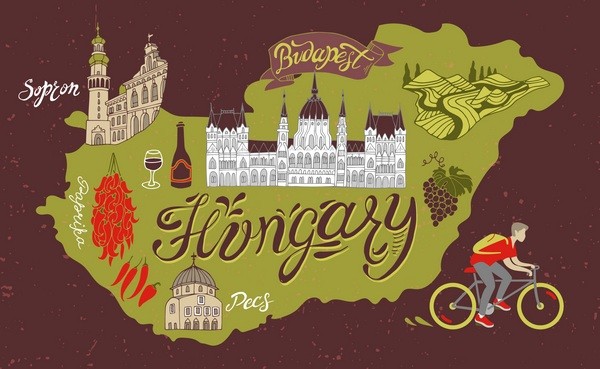Hungarian Translation and Interpreting
LEXIKA translation company provides high quality translations promptly and for a reasonable price. You can contact us with any type of request for a text to be translated from or to the Hungarian language and, apart from identity or official documents, we will reliably supply you with translations in the field of economics, technology or medicine.
We provide Hungarian translations from English, German, and other languages. Of course, texts can be translated from Hungarian into other languages as well. That is why our Hungarian translation services have been used by new as well as regular clients from Hungary and other European countries since 1993.

Why should you contact LEXIKA with a request for Hungarian translation services?
Each translation project is given special attention in order to provide our clients with a tailor-made translation consistent with their requirements. Our translation and interpretation services are of the highest quality and the agreed deadlines are always met, because we approach both aspects with due care.
We use the latest software tools to ensure the quality of our translations during the translation process as well as in the subsequent process of quality assurance.
Our long-standing experience in the field of economic, legal, and technical translations is a guarantee of client satisfaction, and our regular clients, who have been supplied with tens of thousands of translations over more than 20 years, will only confirm the fact.
Hungarian translation services in the field of economics and law mainly include business and employment contracts, company rules and policies, and other types of business or dispute documentation.
The most requested technical translations comprise instructions for use, maintenance manuals, and handbooks dealing with machinery and other technical equipment installation.
How do we do it?
Expert Hungarian translators
Technical texts are always translated by experts in the given field. We cooperate with Hungarian translators who are experts in a wide range of specializations and carefully select the most suitable linguist from the point of view of language use and terminology for each translation job.
International standards
Since 2009, our quality management system has been annually audited by TÜV SÜD, a renowned audit company, according to the ISO 9001 standard. Implementing the standard guarantees systematic processing of all requirements as well as a high quality of service and end product. We carefully analyse our clients’ needs and recommend they have their texts translated in compliance with ISO 17 100 standard which imposes high quality requirements on translators and the entire translation process.
Modern technologies
It is a matter of principle that all translations are carried out by people who work with modern translation technologies. Thanks to these technologies, consistent terminology is used in our translations, and the entire translation process is therefore more effective and meets higher quality standards. Technologies can also reduce translation costs to some extent.
Quality assurance
Although the latest software tools are used in the process of quality assurance, we never forget to ensure that each translation is checked by our expert reviewer’s eye. The quality assurance process verifies the use of terminology defined by the client and the correct use of translation procedures including all revisions, spelling corrections, proofreading, and compliance with any specific client’s requirements. We also pay special attention to the graphical layout.
Interested in using our services?
Leave us a message with your requirements and we’ll get back to you
A very special European language
Hungarian is spoken by almost 15 million people. It is one of the official languages of the European Union and a minority language in Slovakia, Serbia, Romania, and Croatia. Due to its complex grammatical structure and, let’s say, 18 inflexional suffixes, it is probably rightly considered to be a very difficult language and a tough nut to crack. We shall see later how it really works. But that’s enough grammar for now. Let’s first look at the history of this interesting language.

Uncertain origin and runic alphabet
More precise knowledge on the Hungarian language is evidenced by the occurrence of isolated Hungarian words and nouns found in texts from the 10th century. During that period, an old Hungarian runic script called rovás was in use. Later, after the formation of the Kingdom of Hungary, under the rule of King Stephen I of Hungary, it was substituted by the Roman alphabet. Like many other languages, Hungarian too was influenced by Latin, because the Kingdom of Hungary was Christian.
The oldest preserved coherent text written in Hungarian is religious and dates back to the 12th century. The orthography of such texts differs considerably from present-day Hungarian. What is interesting is the fact that if you speak Hungarian, you should at least partially understand these texts even though Hungarian grammar and vocabulary are quite different from the language of the 12th century.
The Hungarian language of the 17th century more or less resembles the present-day language. Some words were added from Slavic languages, but also from German, Italian, French, and later, during the rule of the Ottoman Empire, even from Turkish (e.g. apple – alma, from Turkish, elma). A century later, a group of linguists led by Ferenc Kazinci started a language reform introducing, inter alia, more than 10 thousand new words into Hungarian.


Interesting idioms and complicated pronunciation
Many people certainly appreciate the fact that Hungarian does not distinguish between the masculine, the feminine, and the neuter gender. The plurals of nouns are formed relatively easily – a letter “k” or, more precisely, the “ek” suffix is added at the end of the word.
